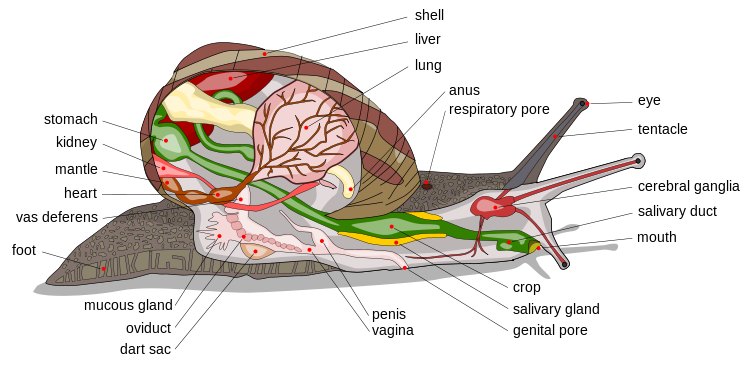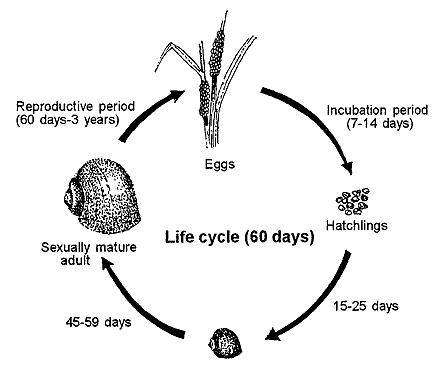Reproduction
Ken Hotopp and Tim Pearce describe the Neohelix albolabris reproductive system as monoecious. Monoecious means that they are hermaphroditic or each individual possesses both the male and female reproductive parts and is able to produce both eggs and sperm. Being monoecious, N. albolabris is able to reproduce asexually, but they reproduce sexually whenever it is possible. Only if the environment prohibits sexual reproduction, will this snail turn to asexual reproduction. In terms of sexual reproduction, this involves internal fertilization brought about by copulation, or sexual intercourse. Once the eggs are ready to be laid, the snail finds a nice protected, damp place to lay them (Hotopp, Pearce 2006). After the eggs hatch, the snail has a direct life cycle (Eisenhour et al., 2012). Direct life cycle means that the organism doesn’t have more than one larval stage (Eisenhour et al., 2012). In other terms, a snails appearance does not change throughout its life, its appearance when born is the same when it is a grown adult.
Gary F. McCracken and Peter F. Brussard state that terrestrial snails sexually reproduce within small, restricted populations. This, in turn, means that snail populations don’t have much variation and that mutations traveling between snail populations is very unlikely (Brussard and McCracken 1979).
This diagram shows the anatomy of a monoecious snail. As previously stated, Neohelix albolabris contains both male and female reproductive parts.
As previously stated,
N. albolabris has a
direct life cycle. This diagram shows the exact stages of their
lifecycle. It
clearly shows that
Neohelix albolabris only has one larval stage in its
lifetime.
Back to Home

